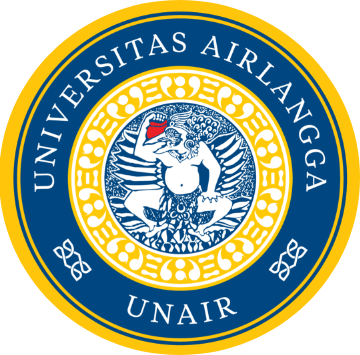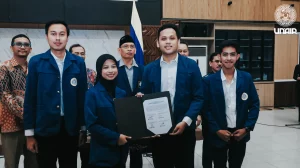Leprosy is an infectious disease that attacks the skin and nerves, caused by Mycobacterium leprae (M. leprae). The main symptoms of leprosy are loss of a sensation in the skin and the development of deformities and disabilities during the progression of the disease. According to WHO, leprosy is classified as paucibacillary (PB) or multibacillary (MB). PB leprosy is a milder type of the disease, defined by hypopigmented, pale, and reddish lesions with the presence of 1 to 5 skin lesions or nerve disorders. Meanwhile, MB leprosy is characterized by the presence of > 5 skin lesions and can also have nodules, plaques, and diffuse skin infiltration. There were 202,256 new cases detected in 118 countries in 2019, and 79% of cases came from India, Brazil, and Indonesia.
Data obtained from Dermatology and Venereology Outpatient Clinic at 13 Academic Hospitals in Indonesia shows that Jakarta is the city with the highest number of leprosy patients, which was 396 subjects (16.1%), while Semarang had the lowest number, which was 54 subjects (2.2%). The majority of the subjects were >14 years old (95.3%), and only 4.7% were
The findings conducted by the Leprosy Division of Dermatology and Venereology Outpatient RSUD Dr. Soetomo in 2018 to 2020 revealed that the MB form of leprosy was the most prevalent in Indonesia (86.2%), followed by paucibacillary (PB) (11.1%), indeterminate (0.7%), lucio (0.6%), histoid (0.2%) and subclinical (0.2%). Intermediate is a type of early-stage leprosy whose symptoms are not clearly visible; usually, there are only hypopigmented lesions and little nerve disturbance and can differentiate into other forms of leprosy. Intermediate symptoms can cause leprosy sufferers to be unaware of their condition, so very few patients have their condition checked by a doctor. A histoid leprosy is a rare form of leprosy with a higher load of bacilli than lepromatous leprosy. It is characterized by rafts of bacilli (globi). Lucio leprosy is also a rare type of leprosy with infiltration as the main skin manifestation. Meanwhile, subclinical leprosy is a patient with positive M. leprae, but has no symptoms at all. Parameters of bacillus examination through smear can be divided into 2: MI and BI using Ziehl Neelsen staining.
The most common leprosy reactions were erythema nodosum leprosum (ENL) (20.3%), followed by reversal reaction (RR) (13,3%) and Lucio (0,7%). The leprosy reaction is a phenomenon that can occur before, during, or after complete treatment with MDT. The two common types of leprosy reactions are RR, and ENL develops independently, but can also occur in the same patient. RR usually occurs in BT, BB, BL, and LL types of leprosy, while ENL generally occurs in LL leprosy types only. Along with these two leprosy reactions, there is one severe leprosy reaction referred to as the Lucio Phenomenon.
The most common disability experienced was in the hands (26.6%), followed by feet (22.9%), and eyes (2.5%). Palembang and Manado were the cities with the highest incidence of hand disabilities. The subjects from Palembang were the most likely to have leg disability. As for eye disability, subjects from Manado were the most affected. Most of the defects in the study subjects were 3rd-degree disabilities. Grade type 1 indicates normal sensation with no visible impairments. Grade 2 indicates visible impairments/deformity (Eye = lagophtalmos, hands = claw hand, feet = claw foot, drop foot, ankle contracture. It is important for the clinician to be able to perform a nerve examination after examination of the skin in order to detect any defects in leprosy patients. Multicenter research data shows that although most patients have received MDT MB (multidrug therapy MB) therapy, there is still a small percentage (2.1%) of patients who do not get therapy, thus requiring immediate follow-up to prevent the occurrence of defects that can lead to a decrease in the patient’s quality of life.
Author: Prof.Dr.Cita Rosita Sigit Prakoeswa,dr.,Sp.KK(K)
Details of this article can be viewed in our article at:
https://e-journal.unair.ac.id/BIKK/article/view/32538
Epidemiology of Leprosy in Indonesia: A Retrospective Study
Cita Rosita Sigit Prakoeswa,Ramona Sari Lubis, Qaira Anum, Fifa Argentina, Sri Linuwih Menaldi, Hendra Gunawan, Renni Yuniati, Nur Rachmat Mulianto, Agnes Sri Siswati, Dhelya Widasmara, Luh Made Mas Rusyati, Enricco Hendra Mamuaja, Vitayani Muchtar, Regitta Indira Agusni, Bagus Haryo Kusumaputra, Medhi Denisa Alinda, Muhammad Yulianto Listiawan,









